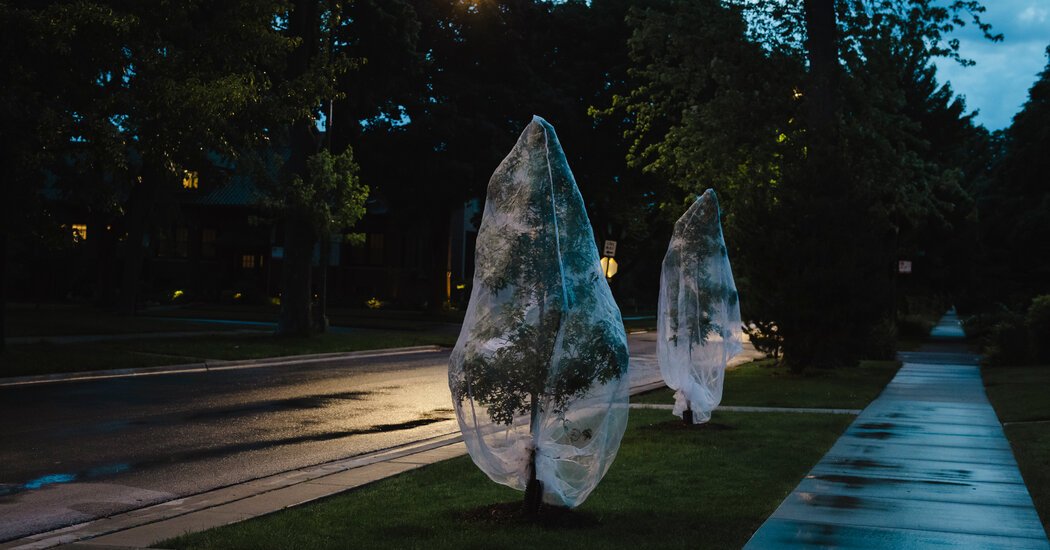In May, parts of Chicago were covered for the first time in 17 years by a brood of buzzing, mating, crawling red-eyed cicadas. The city’s tiniest trees were ready.
Homeowners in Chicago have wrapped small trees in their yards with mesh netting, leaving the trees shrouded in white — and protected from any damage that the cicadas might inflict during the emergence of the group of cicadas known as Brood XIII. Another group, Brood XIX, emerged at the same time in southern parts of Illinois, and in many other regions of the United States.
The cloaked trees have created a mysterious and striking effect across the city and its suburbs, with purple and green leaves of Japanese maples or elms barely visible behind translucent tulle.
Botanists say that such coverings are a smart idea. As female cicadas lay eggs that gestate for the next 13 or 17 years, it can cause short-term damage to some trees and shrubs.

Tom Tiddens, supervisor of plant health care at the Chicago Botanic Garden, said that while cicadas don’t bite or sting people, they can do harm to young trees with small branches. Female cicadas make long slits in twigs, laying 20 eggs in each slit, up to 600 eggs in total.
Mr. Tiddens said that trees of about six feet or shorter with pencil-size branches can benefit from being wrapped until the periodical cicadas are gone in several weeks.
While netting can restrict new growth, he said, once it is removed the small trees should regain their form within a month or two.
Homeowners with unprotected trees need not worry. “Most trees and shrubs will bounce back from cicada damage just fine,” he said.










